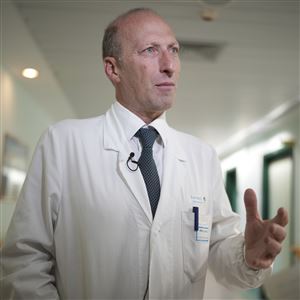Richard Henkel took his death toll to the grave.
Those who knew Henkel during and after his decades as a bank robber, con man, likely hitman — and, possibly, prolific serial killer — believe it’s somewhere between the five people he confessed to killing and the 28 he purportedly bragged about to an associate.
Debbie Gentile, Bruce Agnew, Andrew Russman, Glenn Scott and his wife, Joann ‘Sasha’ Scott — those are the ones we know about. He pleaded guilty to killing Gentile and admitted to killing the Scotts. He led police to Agnew’s body after a last-minute plea deal, but he couldn’t recall exactly where he’d buried Russman on the same stretch of undeveloped land in Westmoreland County.
Authorities then and now believe there were more: Henkel’s associates often turned up dead.
There was Joe DeMarco, whom newspapers from the time called an organized crime figure from Brookline. His bullet-riddled body was found in the trunk of a car at the Greater Pittsburgh Airport in 1979.
Authorities always suspected Henkel had a hand in the murder of his fiancé a year earlier. Suzanne Dixon was found shot to death in the trunk of her car in New Kensington, though Henkel denied his involvement.
Others just vanished.
James Barone broke into the Fort Pitt Federal Savings and Loan Association, Downtown, with Henkel late one night in January 1969. Then he disappeared.
And the last time anyone saw Laurence Windsor, according to reports from the time, was about a week after he and Henkel robbed a bank in Mount Washington in July 1969. Days later, he told his wife he was going to shoot pool with friends and never came home.
Joseph DeRose Jr., a Youngstown mobster, disappeared in 1981. Police found his girlfriend’s car burning along an Ohio highway but no trace of him. Henkel was in jail at the time, but investigators believe he was pulling the strings in DeRose’s presumed murder.
Where the bodies were buried, why he did it, if he did it — Henkel likely took all of that to the grave with him. He died Jan. 27 from congestive heart failure at 87, according to his obituary, after more than four decades in prison. He left behind nieces and nephews who wrote that he was a good man who was more than the mistakes he made. But investigators say he also left behind a trail of unanswered questions.
Attempts to reach his surviving family members were unsuccessful.
Photos from the time show a wiry man with a slight frame. His wasn’t an appearance that left an impression. It didn’t need to — his reputation preceded him.
“He’s the kind of guy like in these old cowboy movies or gangster movies: When he would come in the bar, people would leave,” recalled his defense attorney, Paul Gettleman. “There was a bar, used to be right down by the courthouse, and people would leave just because he was in there and there was the possibility that something bad would happen.”
He said if Henkel — who lived in Hampton at the time of his arrest — bragged that he killed 28 people, he believes it. “He had a policy ... that in order to ensure that his co-defendants or partners in crime didn’t flip on him, he’d kill ‘em.”
Newspaper stories from the time tell of a bank robber and con-man who rubbed elbows with mobsters but remained a relative unknown outside the region’s criminal enterprise until cops linked him to Debbie Gentile, the 27-year-old found shot and stabbed to death in an airport hotel.
Richard Henkel didn’t kill for power or for sport.
Gentile’s life insurance policy was set to pay $800,000 to Henkel’s mother, but only if she died in a plane crash or on airport property. The old airport hotel was two floors above the terminal.
“He became public enemy No. 1 [in the newspapers]” said Bob Payne, who, as an Allegheny County Police detective, spent years securing Henkel’s spot as a lifer in Pennsylvania’s state prison system. Plus, he said: “Everybody loves a good murder plot.”
Richard Henkel killed for money and to tie up loose ends.
“Mostly loose ends,” said Payne, now police chief in Edgewood police — the same department that employed Henkel associate and suspected killer Gary Small.
Chief Payne has a scrapbook full of newspaper clippings from some of his biggest cases. He flips through the yellowed pages: Henkel, Henkel, Henkel, Henkel.
The many unknowns
Heidi Caplan Christakis has spent decades trying to find out what happened to the father she doesn’t much remember. She’s 64, and she’s been searching since she was 18.
“The sad thing is, now we’ll never know because nobody will ever open those cases,” she said in an interview last month. “Nobody will open those cases because nobody really cares.”
Her father was Laurence Windsor, Henkel’s partner in one of the 1969 bank robberies. Windsor and Henkel hit the Keystone Bank in Mount Washington on July 24, and they took off with around $80,000, according to reports from the time. Newspaper reports from the time reported that the men may have entered the bank before it opened and had coffee and doughnuts waiting for the frightened employees.
Warrants were issued for them two months later. By then, Windsor hadn’t been seen in weeks. Reports said the last time he was seen was a week after the robbery when he left home around 10 p.m., purportedly to shoot pool with some friends.
His second wife, Lois, got a telegram the next day from New York. It apologized for the abrupt departure but promised “we’ll be rich.” It was signed “Larry,” according to The Pittsburgh Press. The newspaper reported that neither police nor Lois believed Windsor was the real sender.
Ms. Christakis believes her father went to meet Henkel to divvy up the money and Henkel killed him.
“He was not the type of psychopath, like Jeffrey Dahmer, that wanted to eat people or hated prostitutes,” she said of Henkel. “He only killed for money.”
And to tie up loose ends.
The feds figured Windsor fled with his half of the money, possibly to his native England. They gave up looking after five years and ultimately dropped the charges. Henkel, in the meantime, was tried, convicted and sentenced to 20 years, though he was released in 1974.
Years later, court filings in the Gentile case indicated there were witnesses who could testify as to what Henkel hinted happened to Windsor: “That he killed the person he did the bank robbery with in order to obtain proceeds thereof, details surrounding the robbery (which corresponds to actual occurrences),” according to The Press, “and the manner of death (hammer blows to the head), and that he was buried in lime.”
Ms. Christakis tried asking.
She even tried to visit Henkel once. Pennsylvania has what’s called the victim-offender dialogue program. She said Henkel told people with the program that he didn’t know Laurence Windsor.
“And then six months later, I get a letter from him telling me what my dad thought about me,” she said. “How much he loved me, telling me what kind of guy my dad was and … he doesn’t know who killed him.”
She said Henkel signed his letters with “God bless you,” so she tried once to appeal to whatever religiosity he might have.
“I said to him in a letter once, listen, you have life [in prison]. If you tell me where my dad’s body is, it’s not like you’re going to get any more time,” she said. “If you tell people where there’s other bodies, nothing else is going to happen to you. You’re going to die in there anyway. Why not clear your conscience before you see God?”
If you tell people where there’s other bodies, nothing else is going to happen to you. You’re going to die in there anyway. Why not clear your conscience before you see God?
— Heidi Christakis, on a letter she wrote to Richard Henkle decades after her father disappeared
Retired Ohio police chief and true crime author Rick Porrello built a rapport with Henkel, exchanging letters with the convict while he worked on a book about Henkel’s crimes called “There’s More Bodies Out There.” The title is a nod to a remark Chief Payne told the author he made decades earlier as investigators searched for the bodies of Agnew and Russman.
“I asked, and he said he didn’t know anything about that murder because it was one that he was never arrested for or indicted for,” Mr. Porrello said in an interview. “I mean, that was his answer. It’s like — OK.”
Henkel would kill an associate, he said, but he wouldn’t rat them out.
He said he asked about the 28 killings that Henkel allegedly bragged about once upon a time. Did police exaggerate that number? Did the media? Did Henkel?
He told Mr. Porrello he wouldn’t talk specifics but said: “Nobody exaggerated 28.”
The case that put him on the cops’ radar
“Before the Debbie Gentile case, Richard Henkel was a nobody,” says Chief Payne.
Homicide detectives had never heard of Henkel let alone Debbie Gentile prior to May 1979. She’d flown in from California on May 17,1979, and checked into room 239 at the Greater Pittsburgh Airport Hotel. She had links to Henkel, Chief Payne said, but a refrigerator note was the thread that began the unraveling.
Henkel wasn’t there when investigators arrived at his Hampton apartment to talk about Gentile’s murder, but his nephew was. The young man let them inside.
A “knock and walk,” the chief called it — getting into the home, looking around, and shooting the breeze to try to glean information. In the kitchen, he spotted a note: “Call Jack Siggson, California.”
Siggson was a longtime Henkel associate who, by 1979, was living in Los Angeles and selling jewelry in Long Beach. Gentile wanted to get out of Pittsburgh, afraid that what she knew about Henkel’s dealings would get her killed. And so Henkel sent her out to work with Jack.
It was on a trip out there that Henkel read about air travel-related life insurance in an in-flight magazine. He got Gentile to sign a policy worth $800,000, according to reports from the time. His mother was the beneficiary, but it only paid out if Gentile died in a plane crash or on airport property.
Investigators — including Chief Payne and Patrick Thomassey, then an early career prosecutor — flew to California, brought Siggson back, and put him in front of a grand jury. Because it was a grand jury, that meant they could offer immunity in exchange for testimony. And so people, including Siggson, started talking.
“They were all scared of Henkel, and I can’t blame them,” Chief Payne said.
He reeled off the names of the dead they found in Henkel’s background: Glenn and Sasha Scott, Sue Dixon, the organized crime figure Joe DeMarco — he still thinks the last one was a message to detectives.
Chief Payne said detectives usually put protected witnesses up at the airport hotel. Siggson needed better protection. He was a loose end, after all, and detectives believed that Henkel would find a way to kill him.
Where was Siggson?
“I can’t tell you that,” Chief Payne said.
Rooney was a target
Siggson was also the one who told police about the bomb plot.
“He started talking about this bomb plot, and we’re going, ‘No, come on man, you got to be kidding me,’” he said. “But of course, it was true.”
Siggson was part of the plot, as was local petty criminal Red Ford. And Roy Travis, a Canadian with a knack for explosives who Henkel met while serving time for a robbery. So was Gary Small, an Edgewood police officer who many suspect buried several bodies of his own.
(Later, Chief Payne alleged, Henkel would plant Ford’s watch in the trunk of the car in which Suzanne Dixon was found. “No honor among thieves, that’s for sure,” the chief said.)
Travis rigged a device that, once wired into a car’s ignition system, would allow someone nearby to transmit a signal that would shut down the vehicle. The vehicle’s driver, unable to get away, could be kidnapped, fitted with a bomb, and held for ransom from afar by the only people who knew how to disengage the explosive.
Steelers owner Art Rooney Sr. was a would-be target. So was Ed Ryan, of Ryan Homes.
Chief Payne said investigators found the electronics when they searched Henkel’s home after his arrest, and they sent it all to the feds for testing.
“And they put them together and it worked,” he said. “So we went, ‘holy [crap], there’s truth to this.’”
‘I watched my back’
“He always told people if he ever got out, he was gonna kill me,” said Mr. Thomassey, one of the prosecutors on the Gentile case. “These were true criminals.”
Henkel’s bomb knowledge — and ties to people with that knowledge — prompted a new layer of concern, and police officers posted up at the Thomassey house for months. Mr. Thomassey said he was making $17,000 a year and living in a two-bedroom house.
“My wife kept saying, ‘Why did you become a DA?’”
He wasn’t scared, he said — just concerned.
“I watched my back more than I ever did before,” he said.
Henkel’s defense attorney, on the other side of things, felt similarly.
“I never felt that Henkel was dangerous to me in that he knew that I was the key between the street and the penitentiary for the rest of his life,” Mr. Gettleman said.
But, “If he felt that I screwed him over, do I think he had the potential or the wherewithal to [turn on me]? Absolutely.”
He was a good client, one who never tried to tell Mr. Gettleman what to do or how to do it. That was good, he said, because Henkel’s case wasn’t winnable. On top of that, the cops were going after his mother and one of his brothers because of their dealings in his illegal proceeds.
Henkel pleaded out.
It was an 11th-hour deal struck amid jury selection that would spare him the electric chair if he pleaded guilty to Gentile’s murder and agreed to confess to killing Glenn and Sasha Scott, Bruce Agnew and Andy Russman.
“I think his main motivation was keeping his mother out of it and keeping his brother out of it,” Mr. Gettleman said.
He also agreed to show investigators where Agnew and Russman were buried.
It was mid-July when Henkel, Mr. Gettleman, Chief Payne, and other investigators trekked to Mamont, a section of Washington Township in Westmoreland County west of the Beaver Run Reservoir. They never found Russman’s body. After several days of searching, investigators unearthed Agnew’s remains.
Chief Payne still has the photos in his scrapbook: “This is Bruce here,” he said, pointing. “I think I’m holding a femur.”
Loose ends
Sasha Scott — whose real name was Joann — received her nickname from her husband, Glenn, more than a decade her senior.
Her best friend was Suzanne Dixon and, during several estrangements from Glenn, Sasha lived with Henkel and Suzanne.
Years later, she paid someone to kill Glenn Scott, though Henkel told investigators he’d decided months earlier when Glenn pointed a gun at him that the man they called “Scotty” had to die. So Henkel and the unnamed hitman Sasha hired — Henkel wouldn’t say who it was — killed Glenn outside a stable he owned.
“But there’s Sasha Scott out there, right?” Chief Payne said. “That’s a loose end.”
Two years later, Sasha opened a Christmas package delivered to the Gemini spa, the massage parlor where she worked Downtown. A cab driver dropped it off, and it was purportedly from one of her regular clients. As she opened the small box, it exploded, killing her instantly.
Sasha also had a life insurance policy — one that would pay out to Suzanne Dixon. Henkel told police his motive there wasn’t the money, but the fear that Sasha was talking about the hit on Glenn.
Chief Payne said that while they were in Canada investigating Roy Travis for his role in the foiled kidnapping bomb plot, the chief learned of a bombing in British Columbia that killed a security guard.
The package had been mailed from Pittsburgh’s Oakland neighborhood, and Canadian authorities spoke to the post office clerk who handled the package. She helped them draw up a sketch of the woman who mailed the package.
“I looked at it and said, ‘That’s Suzanne Dixon,’” he said.
He believes Dixon, who was killed in 1978, was another loose end. But that’s one Henkel took to the grave.
Agnew eventually became a liability. Henkel told investigators he drove the man out to Westmoreland County under the guise of digging up money Henkel had stashed, and he shot him as he dug what would ultimately be his own grave. Henkel gave up little about Russman’s death, only saying he’d been shot and buried on the same property.
“This guy is a prolific serial killer,” Mr. Porrello, the author, said of Henkel.
But not in the way most people think of serial killers.
“He claimed to me that he only did it out of self-preservation,” he said. “He killed when he was threatened. Most often, I think, the threat was he might have somebody testify against him to a serious crime.”
Why not give all of it up? Why stop at five confessions?
Chief Payne said that’s a question only Henkel could have answered.
“Why wouldn’t he give up Windsor? I don’t know,” he said. “It’d be number six — so what?”
Henkel’s defense attorney said he thinks his client only gave up what he had to in order to work out a deal.
“In other words,” Mr. Gettleman said, “he might have killed 12 people but if he said he killed two other people, would that be sufficient to solidify the deal with his mom and his brother?”
‘I know I have to let it go’
And so people like Ms. Christakis are left with no answers.
Even though she knows what likely happened to her father, she’ll never really know. And that’s eaten at her for decades. It’s turned into an obsession, of sorts, with Henkel himself.
Before his death, she’d call the prison to ask about him. When she learned of his death earlier this year, she called the coroner’s office: Where was his body? Did someone claim him? Where would he be buried?
“I know I have to let it go, especially now,” she said. “I’ll never, ever, ever get any answers, and for the sake of my own life, I know I need to let it go. It’s just really hard.”
She still regrets never having met him in person. She didn’t want to yell at him, she said, “I just wanted to feel his aura.
“And the sad thing is, we’re not talking about one dead person, right? There’s multiple,” she said. “He’s a serial killer. And it doesn’t matter. I’m just another name in the book.”
Mr. Porrello wrote the book. He said there’s probably little chance that anyone will get answers. Few people who might have those answers are left.
“Of course, that’s not the end of it,” he said. “Even if there is someone still around, would they have any motivation to admit either their involvement or knowledge of the murder?”
Unlikely, he said, but, “It would be great if they could do some good before they leave this earth.”
First Published: April 13, 2025, 8:00 a.m.
Updated: April 14, 2025, 4:49 p.m.






















